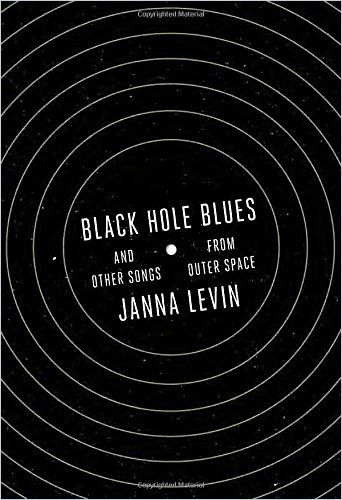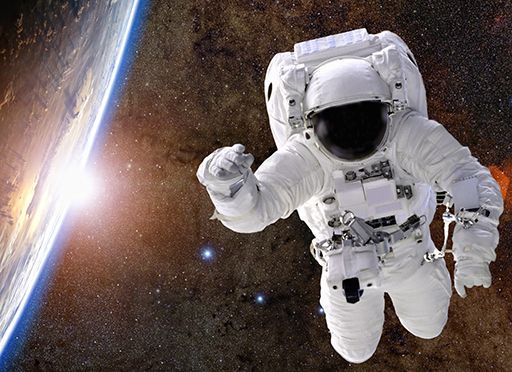Physics and astronomy professor Janna Levin, PhD provides a surprisingly gripping and suspenseful depiction of the scientific efforts to detect gravitational waves.

In Pursuit of LIGO
Theoretical physicist and professor in physics and astronomy at Barnard College of Columbia University Janna Levin, PhD relies on a playful, entertaining style to chronicle scientists’ conflicts, successes, failures, methods and discoveries. Levin’s heroes vest their hopes, careers and lives into pursuing possible phantoms – the gravitational waves from distant galaxies that Einstein predicted. Their quest engendered bitter rivalries, crushed dreams and broken hearts among elite scientists.
A Cosmic Haystack
When black holes collide, releasing more energy than a billion suns, they produce a slight ring made by gravitational waves, which travel through the cosmos. Almost undetectable, gravitational waves reveal the universe’s origins, eventual oblivion and perhaps rebirth.
When black holes collide, the space around them rings until a perfect, spinning, bigger black hole remains and the space goes quiet.Janna Levin
In the early 21st century, Albert Einstein predicted the existence of gravitational waves, which Laser Interferometer Wave Observatories (LIGOs) detect. LIGOs require kilometers-long, microscopically clean tunnels with precisely aligned mirrors at each end. To verify detection, at least two LIGOs, thousands of miles apart, must convert the gravitational waves to sound waves and record them simultaneously. This takes only thousandths of a second.
Struggle
Nobel physicist J. Robert Oppenheimer first proposed black holes in 1939. Physicist John Wheeler and Princeton graduate student, Kip Thorne, defined them in the 1950s and 1960s. Astronomers may never see black holes as dense as a billion suns and as big as Earth’s entire solar system, but black hole collisions render gravitational waves audible.
There is nothing more difficult to take in hand, more perilous to conduct, or more uncertain in its success, than to take the lead in the introduction of a new order of things. (The Prince by Machiavelli, 1513)
Thorne recruited Ron Drever to Caltech to work on the world’s largest LIGOs. Original LIGO architect, MIT’s Rai Weiss, believed a LIGO could detect gravitational waves only if each tunnel of the L-shaped LIGO exceeded a kilometer [0.62 miles] in length. Drever disagreed, promoting his smaller, cheaper LIGOs. The National Science Foundation (NSF) insisted Caltech and MIT agreed on a single approach.
Laser Interferometer Gravitational-Wave Observatories (LIGOs)
Gravitational waves change the length of the lasers in the tunnels by less than one billionth of a trillionth of the distance of the tunnel. The tunnels capture and measure the difference in distance that a gravitational wave creates when two lasers travel at the same time through the tunnels and back.
Scientists shine light up each tunnel, which mirrors reflect and – under normal circumstances – the light reflects back at precisely the same time. In theory, when a cosmic event occurs and its gravitational waves reach a LIGO, the light from one of the two tunnels will reflect back after an almost immeasurably small delay.
LIGO could begin in earnest. Ground could be broken (but wouldn’t be for some time), buildings constructed, and in them over the next two decades the current instruments would come to life.Janna Levin
Former Caltech provost Robbie Vogt, a lead researcher on NASA’s Voyager, ran the LIGO project. Drever, Weiss and Thorne led the science.
Vogt and Drever
Vogt and Drever feuded and Vogt removed Drever from the LIGO team in 1992. A few years later, the NSF fired Vogt.
Drever was indecisive and controlling. Vogt was arrogant and made slow progress. They watched the construction of LIGO sites in Washington State and Louisiana from the sidelines, thus embittering Drever, who dedicated his career to gravitational waves.
The LIGO scientific collaboration expanded to include theorists and complementary observers from around the world.Janna Levin
Construction of the two LIGOs began in the mid-1990s under Barry Barish, a seasoned scientist and project director.
Advanced LIGOs
The project covered 30,000 square feet [2,787 square meters] with vacuum tubes extending four kilometers in each direction. Each mirror had treatments of 80 separate reflective coatings to become nearly 100% reflective. Scientists and engineers worked in spaces that had to remain microscopically clean. Detection instruments were so sensitive that an earthquake in China damaged LIGO optics in Washington state.
In Louisiana, another team constructed a second LIGO. Challenges from hunters opposed to construction and creationists opposed to the science threatened the Louisiana work as environmental concerns in Washington delayed construction there.
Successful installation of a first-generation LIGO occurred in 2000, followed by attaching the first advanced detectors in 2014. Additional LIGO facilities appeared in Europe, Japan and the United States.
Never
Evidence depends on collisions of vast astronomical proportions that cause space to curve and gravitational waves to course through the universe.
This drama – unfolding today and millions of years into the future – sends constant gravitational waves in all directions. LIGOs need to hear them, so the collisions must occur sufficiently near Earth so the waves don’t disperse and deteriorate. Detection could come at any time or never.
There remains no guarantee that a pair of compact objects will collide within a detectable range in our lifetimes.Janna Levin
In 2015, despite decades of frustration, scientific enthusiasm remains unabated. Some planned the launch of LIGO-like detection tools into space.
Success
About a billion ago, two black holes collided and collapsed into one, shooting out gravitational waves. On September 13, 2015, the LIGO in Louisiana detected them, followed microseconds later by the Hanford LIGO in Washington State.
The collision sent us the most powerful single event we have ever detected since the big bang, the power in gravitational waves a hundred billion trillion times the luminosity of the sun.Janna Levin
This happened almost a century after Einstein’s prediction. Most scientists agree that Weiss, Thorne and Drever deserve the credit. They may receive a Nobel prize for opening this portal to the universe.
Perceive the Imperceptible
What a wild ride! Levin provides the perfect depiction of contemporary science: Hundreds of millions of dollars spent, bitter feuds and careers upended, all in pursuit of perceiving the imperceptible. Levin, amazingly, differentiates her myriad characters and inspires readers to develop rooting interests, all while making the complex science perfectly clear even to laypeople. She revels in this saga and her enthusiasm proves contagious as Levin builds an extraordinary level of suspense and, in the end, exhilaration.
Janna Levin also wrote Black Hole Survival Guide. Works on black holes include Black Holes by Brian Cox and Jeff Forshaw; A Brief History of Black Holes by Dr. Becky Smethurst; and Death By Black Hole by Neil deGrasse Tyson.




